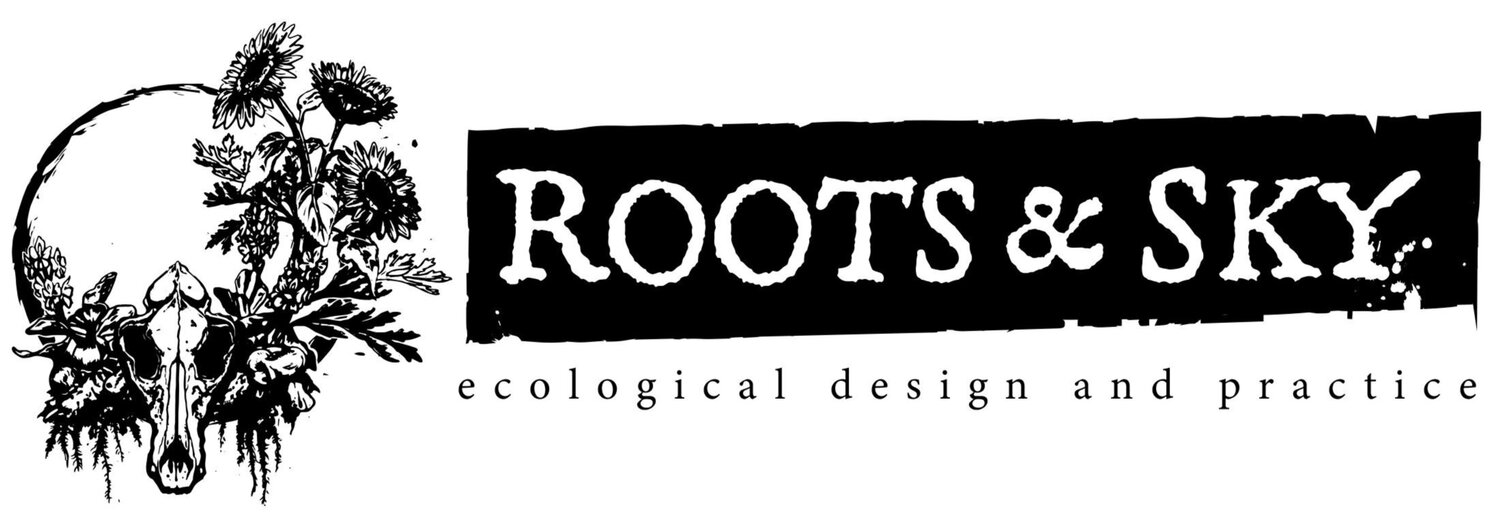In his book, Introduction to Permaculture, foundational designer David Holmgren describes a set of ecological design principles inherent to any permaculture design that can be adapted to any climate or cultural condition.
These Ecological Design Principles include:
· Relative location: every element is placed in relationship to another so that they assist and interact with each other. (Place water tank uphill for gravity irrigation, grow insect repelling plants upwind of a garden, install solar panels near ponds to absorb reflection)
· Each element preforms many functions to maximize efficiency. When designing systems or selecting plants/animals, conduct a functional analysis to identify each element’s needs, outputs/products, attributes, behaviors, optimal conditions, tolerances, and characteristics.
· Each important function is supported by many elements. Redundancy ensures that catastrophic failures are avoided by having two or more supports for critical elements that provide for water, food, energy, fire protection, or any other critical design functions.
· Efficient energy planning for house and settlement. Working with natural slopes and dividing the designed space into zones and sectors will make for efficient use of energy by clustering elements based on visitation frequency: buildings, animal systems, gardens, orchards, etc.
· Emphasis on the use of biological resources over fossil fuel resources. First look to plants and animals to preform functions: animals that graze vs. lawn mowing, plants to attract beneficial insects vs. pesticides, living mulch, compost food waste and manure vs. synthetic fertilizers, etc.
· Energy recycling on site. Capturing, storing, and using energy- creating a living system where energy flows throughout a site. Composting, wind, solar, graywater systems, green manure, etc.
· Using small-scale intensive systems. Efficiently maximize productivity in smaller spaces that can be managed with less resources. Ex. Plant stacking: forest gardening, plant guilds, companion planting, relying on perennial plants instead of annuals. Time stacking: succession planting.
· Accelerating succession and evolution to establish favorable sites and soils. Plant all the layers of a forest at the same time. Begin with hardy plants, establish a windbreak and increase organic matter and soil fertility. (ex. Perennial food systems, food forests, reforesting)
· Diversity. Increasing the functional connections and functional relationships between plant and animal elements of a system. Plant guilds to assist the health and productivity of a central plant. By situating a chicken run below fruit tress- chickens can eat pests, fallen fruits, and weeds- leaving manure as nutrients for the trees.
· Use of edge and natural patterns for best effect. Increasing edges and ecotones increase microclimates, diversity and productivity. Natural patterns are energy and space efficient: lobular river patterns increase water penetration. Keyhole garden beds increase accessible space. An herb spiral creates multiple microclimates: sun/shade, arid/moist.
· Understanding the nature of an apparent problem may lead to a design solution. Look at everything as a positive resource and figure out how to make use of it. Wind that causes crop damage can indicate that the site is a good location for a wind turbine.
· Imagining permaculture design solutions requires creative thinking rooted in multidisciplinary knowledge and experience. Take the time to observe, contemplate, discuss, read and learn.
